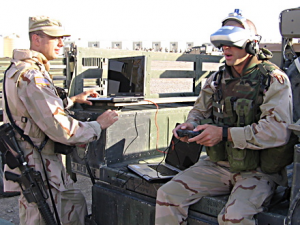In designing mHealth solutions, one of the most important initial steps is identifying the target population. Asking “Who will benefit?” is one of the best ways to kick-off a successful, targeted mHealth campaign. To do this, we spend time gathering statistics about how many people own mobile phones, who owns smartphones, who texts, who tweets, and who talks. As we narrow down our target population to a specific subset, certain groups will inevitably be left out. One such population, is the incarcerated.
While inmates are not generally allowed access to mobile phones, mobile health, specifically telemedicine, holds a lot of promise in improving healthcare among this population. In December 2013, mHealth News reported that the Louisiana Department of Corrections (DOC) was planning to increase the use of telemedicine in their prisons three-fold as the primary healthcare delivery system for its inmates. By collaborating with AMD Global Telemedicine Inc—the leading Telemedicine Encounter Management Solutions supplier—the DOC hopes to serve over 50,000 inmates. Prior to this innovation, handcuffed prisoners had to be transported 150 miles by bus to reach the nearest healthcare facility, where all prisoners had to remain until everyone had been seen.
By establishing a telemedicine infrastructure—training doctors and healthcare professionals and purchasing video and medical equipment—inmates can be screened for the few that need face-to-face interaction, while the others can be seen virtually from the prison. With the technology provided by AMD, up to 15 patients can be seen by a single physician in just four hours. In addition to increasing productivity and tailoring care, the increased use of telemedicine is also cost-effective. Using telemedicine will greatly reduce transportation costs and payment for personnel who need to be transported from the prison. Additionally, the DOC is receiving additional funding from the state, which will allow it to pay for the aforementioned training and purchases.
Telemedicine is also especially valuable because it provides an opportunity for the consolidation of medical information through the digital interface. An article in PRWEb covering this telehealth development describes the program’s capacity to “deliver live medical images from connected medical devices and scopes, real-time video from an examination camera, and the ability to view patient documents and vital signs data all in the same online platform.” Furthermore, patients can use telemedicine to access physicians of 16 different medical specialties, including primary care, neurology, and endocrinology.
Telemedicine provides a very promising avenue for using media and digital technology to reach underserved populations. The incarcerated community is oftentimes overlooked for many medical innovations. However, this is one valuable opportunity in which such innovations can, and most likely will, be both highly useful and significantly impactful. While it is simple enough to design media solutions for educated professionals, the potential of mHealth is much more expansive, and should be utilized in as many ways as possible.
http://www.mhealthnews.com/news/telemedicine-behind-bars-prison-mobile-mHealth?page=0
http://www.prweb.com/releases/2014/02/prweb11575342.htm









